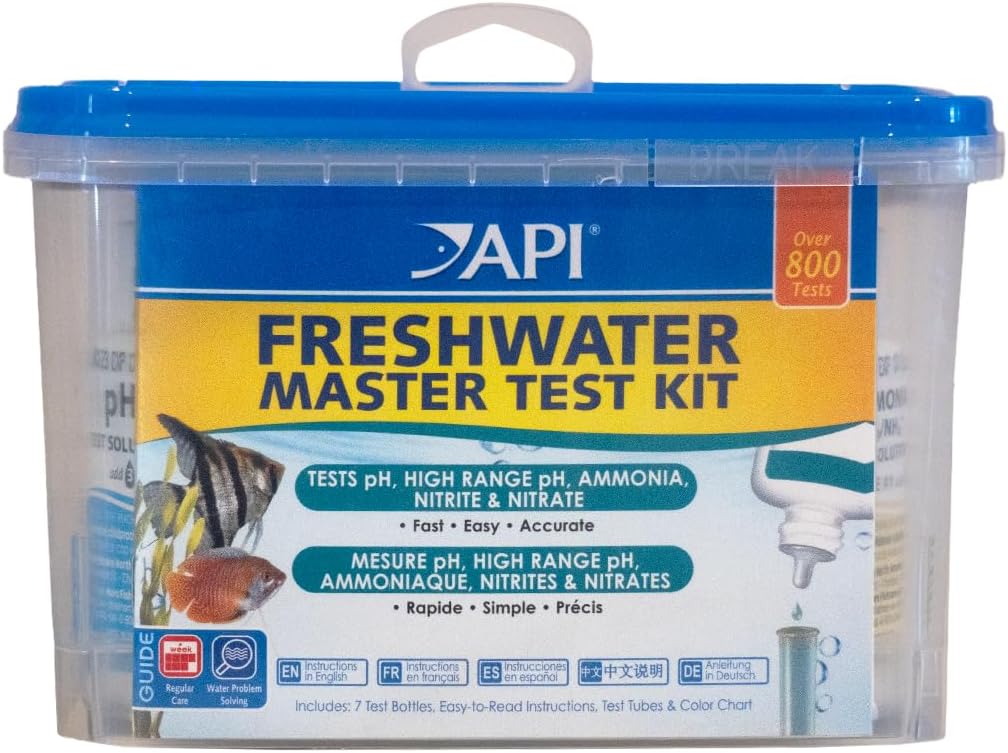Columnaris Treatment, Symptoms, & Disease

Columnaris forming around the gills and down the side of the body
Have you noticed that your vibrant betta fish has been looking less active lately? Are there any unusual white or cotton-like growths on their body or fins? These could be signs of, a common and potentially serious bacterial infection in bettas called Columnaris.
But don’t panic – with early detection and proper care, your betta can recover from columnaris and thrive again. This guide will help you understand, treat, and prevent in your beloved aquatic companion. Step one is TEST THE WATER!
 Click To Learn More
Click To Learn More
What is Columnaris?
Columnaris, also known as cotton wool disease or saddleback disease, is caused by the bacteria Flavobacterium columnare. This bacterium is present in most aquariums, but it only becomes a problem when the fish’s immune system is weakened or when there’s an injury. The bacteria then attack the fish’s skin, fins, and gills, causing lesions, tissue damage, and potentially even organ failure.
Symptoms of Columnaris in Bettas
Flexibacter columnaris, also known as columnaris or cotton wool disease typically shows the following symptoms:
- White or grayish cotton-like growths on the body, fins, or mouth
- Redness or inflammation of the skin and fins
- Fin rot (frayed or disintegrating fins)
- Lethargy and loss of appetite
- Difficulty breathing or gasping at the surface
- Skin ulcers or lesions
Recognizing these symptoms early is crucial, as columnaris can progress rapidly and become life-threatening. If you suspect your betta has columnaris, read on for the treatment recommendation.
Causes and Risk Factors of Columnaris & Betta Fish Cotton Wool
Several factors can contribute to columnaris outbreaks in betta fish:
- Poor water quality: High ammonia or nitrite levels, low pH, and fluctuating temperatures can stress bettas and make them more susceptible to infections. Check your water quality using a testing kit.
- Stress: Overcrowding, aggressive tank mates, sudden environmental changes, and poor nutrition can weaken a betta’s immune system.
- Injury: Open wounds or abrasions provide an entry point for the bacteria.
- Betta’s anatomy: Their long, flowing fins and delicate skin make them more vulnerable to infections.
Treating Columnaris in Betta Fish
- Isolate the fish: Move the affected betta to a clean quarantine tank with appropriate water parameters and filtration.
- Start medication: Get API PIMAFIX which is designed to rapidly treat fungal infections using an all-natural extract from West Indian Bay Trees.
 Click here to learn more about Pimafix
Click here to learn more about Pimafix
- Perform water changes: Change 50% of the water daily during treatment and maintain optimal water parameters with a testing kit.
- Monitor the fish: Observe the betta closely for signs of improvement or worsening symptoms. Adjust treatment as needed.
- Continue treatment: Complete the full course of medication even if the fish appears to have recovered.
- Prevent reinfection: Maintain excellent water quality, minimize stress, and quarantine new fish to prevent future outbreaks.
Columnaris Treatment Options
- Antibiotics: The most effective treatment for columnaris is antibiotics. Kanamycin, furan-2, and erythromycin are commonly used. Follow the dosage instructions exactly and complete the full course of treatment.
- Antibiotics:
- Kanamycin & Furan-2: 7-10 days
- Why not longer:
- Antibiotic Resistance: Overuse or prolonged use of antibiotics can lead to antibiotic-resistant bacteria, making future infections more difficult to treat. Kanaplex is another popular option.
- Organ Damage: Extended exposure to antibiotics can potentially damage the fish’s internal organs, such as the liver and kidneys.
- Disruption of Beneficial Bacteria: Antibiotics can also harm beneficial bacteria in the fish’s gut and in the aquarium, potentially leading to digestive issues and imbalances in the nitrogen cycle.
- Why not longer:
- Maracyn-Two: 5-7 days (Often used in conjunction with another antibiotic, so the total duration may be longer)
- Why not longer:
- Similar risks to other antibiotics: While Maracyn-Two is generally considered safe for fish, prolonged use can still lead to antibiotic resistance, organ damage, and disruption of beneficial bacteria.
- Why not longer:
- Kanamycin & Furan-2: 7-10 days
- Antibiotics:
- Antibacterial Baths: These can be used in conjunction with antibiotics or as a standalone treatment for mild cases. Prepare a bath with a suitable antibacterial medication and follow the instructions on the label.
- Water Changes: Frequent water changes (50% daily) are essential for removing bacteria and waste products from the tank, promoting healing, and preventing reinfection.
- Aquarium Epsom salt: Adding aquarium salt can help reduce stress, improve gill function, and create a less hospitable environment for bacteria.
Preventing Columnaris
The best way to deal with columnaris is to prevent it from happening in the first place. Follow these tips to keep your betta healthy and free from infection:
- Maintain optimal water quality: Test your water regularly with a testing kit and keep ammonia, nitrite, and nitrate levels at zero. Maintain a stable temperature and pH within the ideal range for bettas.
- Quarantine new fish: Quarantine them in a separate tank for at least two weeks. This will allow you to observe for any signs of illness and prevent the spread of disease to your established fish.
- Minimize stress: Provide your betta with a spacious tank, plenty of hiding places, and a varied diet. Avoid overcrowding and aggressive tank mates. Make gradual changes to their environment and avoid sudden fluctuations in water temperature.

